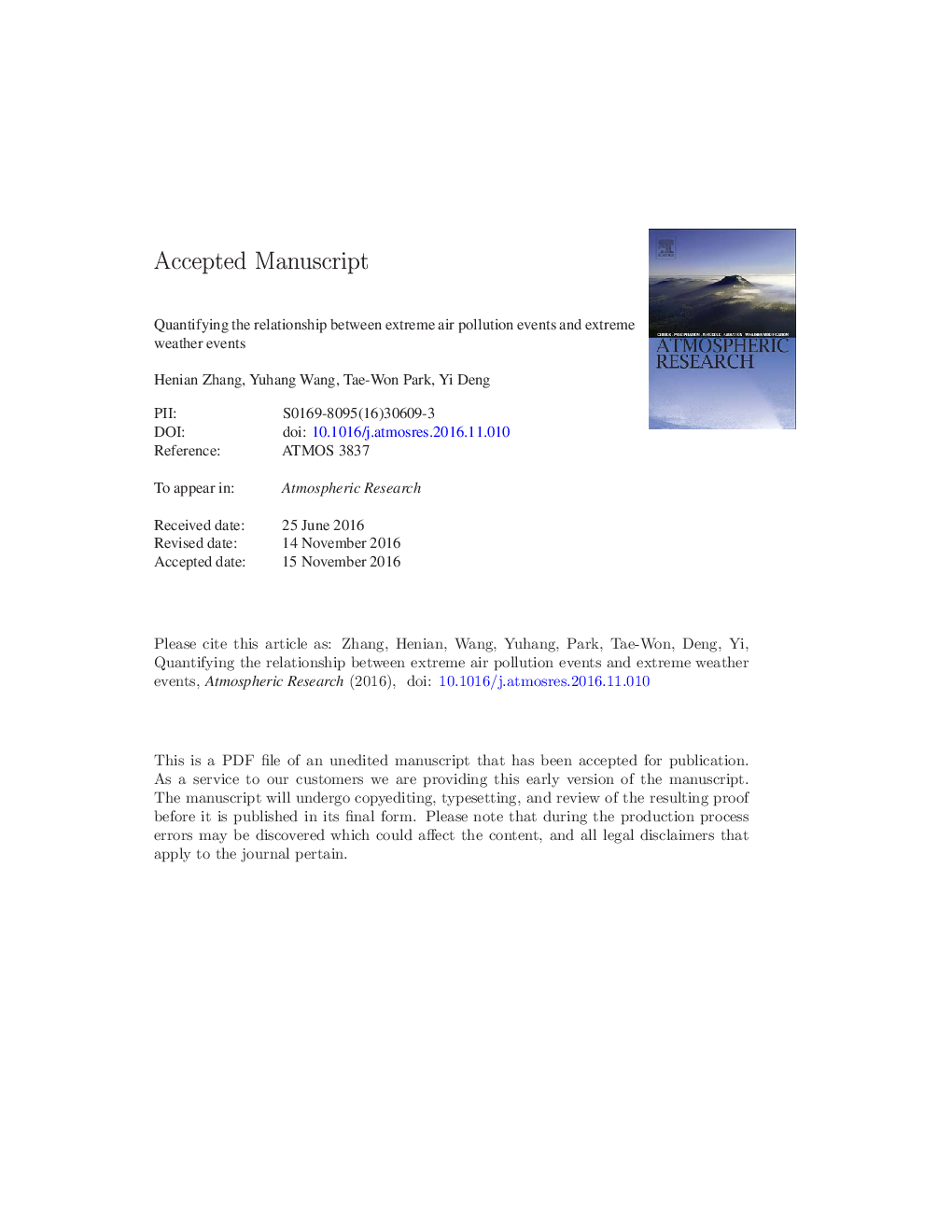| کد مقاله | کد نشریه | سال انتشار | مقاله انگلیسی | نسخه تمام متن |
|---|---|---|---|---|
| 5753832 | 1620493 | 2017 | 48 صفحه PDF | دانلود رایگان |
عنوان انگلیسی مقاله ISI
Quantifying the relationship between extreme air pollution events and extreme weather events
دانلود مقاله + سفارش ترجمه
دانلود مقاله ISI انگلیسی
رایگان برای ایرانیان
کلمات کلیدی
موضوعات مرتبط
مهندسی و علوم پایه
علوم زمین و سیارات
علم هواشناسی
پیش نمایش صفحه اول مقاله

چکیده انگلیسی
Extreme weather events can strongly affect surface air quality, which has become a major environmental factor to affect human health. Here, we examined the relationship between extreme ozone and PM2.5 (particular matter with an aerodynamic diameter less than 2.5 μm) events and the representative meteorological parameters such as daily maximum temperature (Tmax), minimum relative humidity (RHmin), and minimum wind speed (Vmin), using the location-specific 95th or 5th percentile threshold derived from historical reanalysis data (30 years for ozone and 10 years for PM2.5). We found that ozone and PM2.5 extremes were decreasing over the years, reflecting EPA's tightened standards and effort on reducing the corresponding precursor's emissions. Annual ozone and PM2.5 extreme days were highly correlated with Tmax and RHmin, especially in the eastern U.S. They were positively (negatively) correlated with Vmin in urban (rural and suburban) stations. The overlapping ratios of ozone extreme days with Tmax were fairly constant, about 32%, and tended to be high in fall and low in winter. Ozone extreme days were most sensitive to Tmax, then RHmin, and least sensitive to Vmin. The majority of ozone extremes occurred when Tmax was between 300 K and 320 K, RHmin was less than 40%, and Vmin was less than 3 m/s. The number of annual extreme PM2.5 days was highly positively correlated with the extreme RHmin/Tmax days, with correlation coefficient between PM2.5/RHmin highest in urban and suburban regions and the correlation coefficient between PM2.5/Tmax highest in rural area. Tmax has more impact on PM2.5 extreme over the eastern U.S. Extreme PM2.5 days were more likely to occur at low RH conditions in the central and southeastern U.S., especially during spring time, and at high RH conditions in the northern U.S. and the Great Plains. Most extreme PM2.5 events occurred when Tmax was between 300 K and 320 K and RHmin was between 10% and 50%. Extreme PM2.5 days usually occurred when Vmin was under 2 m/s. However, during spring season in the Southeast and fall season in Northwest, high winds were found to accompany extreme PM2.5 days, likely reflecting the impact of fire emissions.
ناشر
Database: Elsevier - ScienceDirect (ساینس دایرکت)
Journal: Atmospheric Research - Volume 188, 15 May 2017, Pages 64-79
Journal: Atmospheric Research - Volume 188, 15 May 2017, Pages 64-79
نویسندگان
Henian Zhang, Yuhang Wang, Tae-Won Park, Yi Deng,